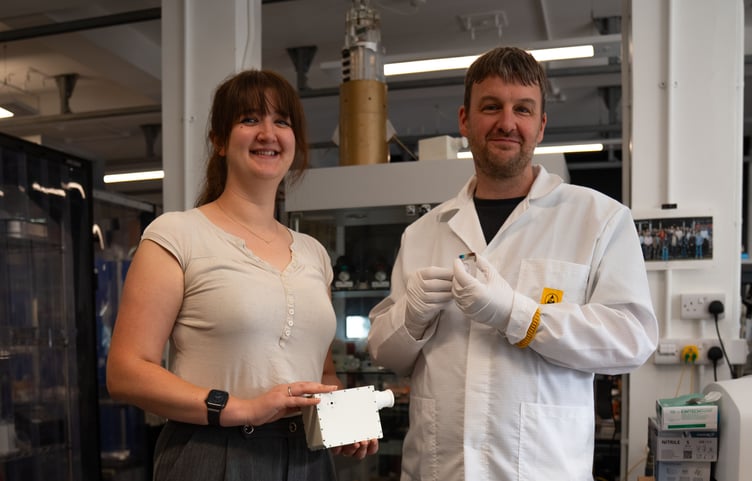Aberystwyth has taken at a place at the heart of the ongoing search for life on Mars as the quest takes a leap forward with a key instrument for a major space mission beginning its journey from Aberystwyth University to Italy for testing.
The infrared spectrometer, named Enfys, will be a part of the suite of remote sensing instruments onboard the ExoMars Rosalind Franklin Rover.
The Rosalind Franklin Rover is part of the European Space Agency’s ExoMars programme and Europe’s first Mars rover.
Designed to be operated remotely across the planet’s rugged terrain, it will drill up to two metres beneath the surface to analyse samples for organic compounds and biomarkers - potential signs of past or present life.
Enfys will work in tandem with PanCam - a camera system led by UCL’s Mullard Space Science Laboratory - to pinpoint mineral targets.
These insights will enable the rover to select optimal drilling sites on the Martian surface, with samples analysed by other onboard instruments.
The instrument will be installed on the rover’s ‘Earth twin’ known as the Ground Test Model located at the Aerospace Logistics Technology Engineering Company in Turin.
This model resides in a Mars terrain simulator, allowing scientists to thoroughly test systems and scenarios while the real rover remains in a sterile environment.
Dr Matt Gunn from the Department of Physics at Aberystwyth University is the Principal Investigator on Enfys.
He said: “This milestone marks a proud moment for Welsh science, placing Aberystwyth at the heart of one of the most advanced planetary exploration projects in history.
“Once Enfys has been installed on the Ground Test Model Rover in Turin, it will allow us to rigorously test and refine our systems ahead of launch.
“The team here in Aberystwyth, along with our partners, has worked tirelessly to reach this point, drawing on years of experience in space instrumentation development to push the boundaries of what’s possible.”
Dr Helen Miles from the Department of Computer Science at Aberystwyth University is the Operations Software Lead for Enfys.
She added: “Although several rovers have explored Mars, Rosalind Franklin will be the first to drill two metres below the sun-baked surface, where the chances of finding preserved evidence of life are highest.
“It’s really exciting to contribute to a mission that could help unlock the secrets of life on Mars.”
Following this milestone, the Aberystwyth-led team will shortly turn its focus to constructing the flight model of Enfys, which will be fitted to the Rosalind Franklin Rover ahead of its journey to the red planet.
The development and testing of Enfys is led by Aberystwyth University, along with support from Mullard Space Science Laboratory (MSSL) at University College London, STFC Rutherford Appleton Laboratory and Qioptiq Ltd.
Aberystwyth University was given greater responsibility for the mission after the cancellation of collaboration with Russia’s Roscosmos following the invasion of Ukraine in 2022.
Enfys’ development at Aberystwyth University was made possible by an additional £10.7 million in funding from the UK Space Agency.



.jpeg?width=209&height=140&crop=209:145,smart&quality=75)

Comments
This article has no comments yet. Be the first to leave a comment.